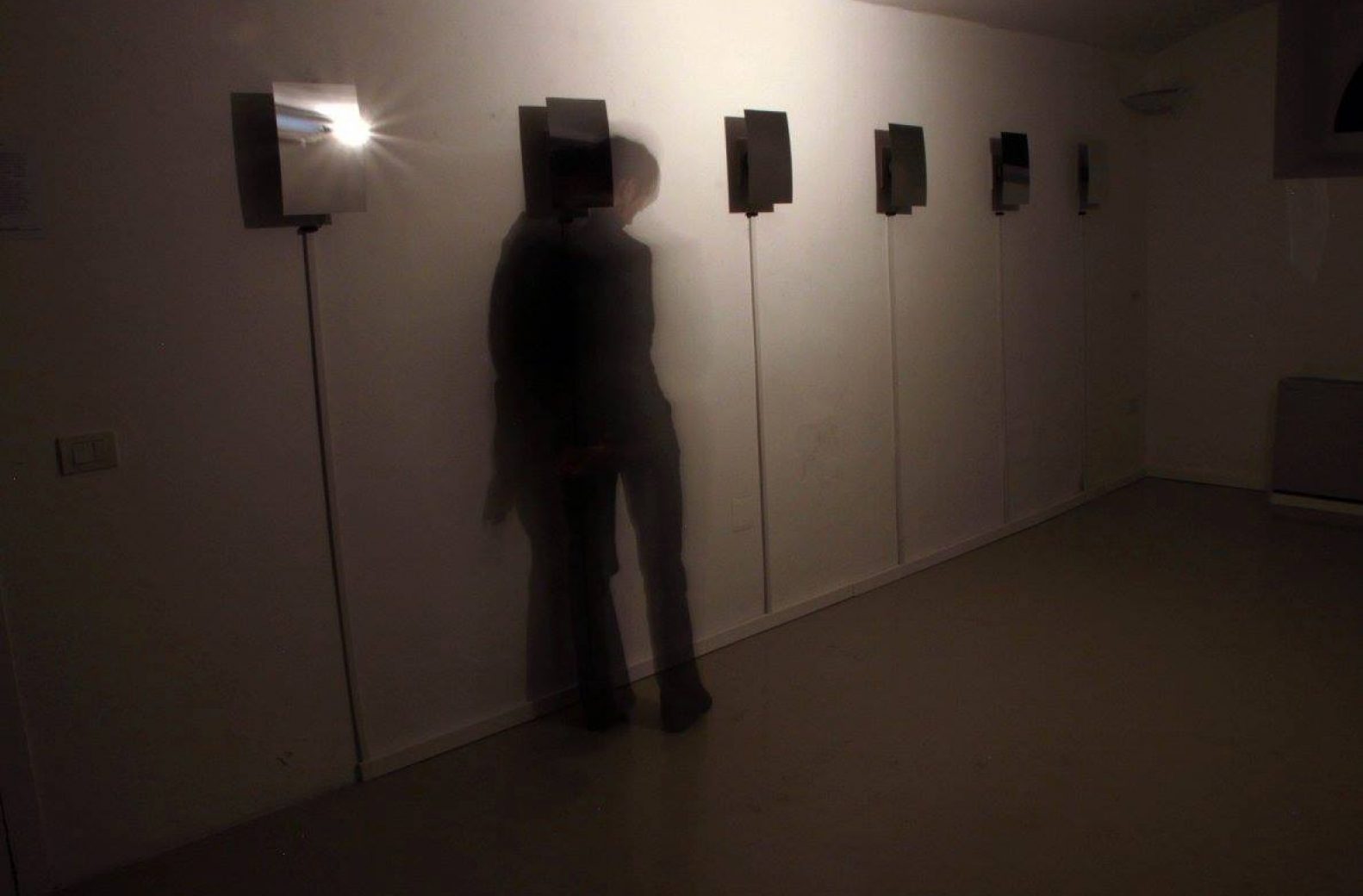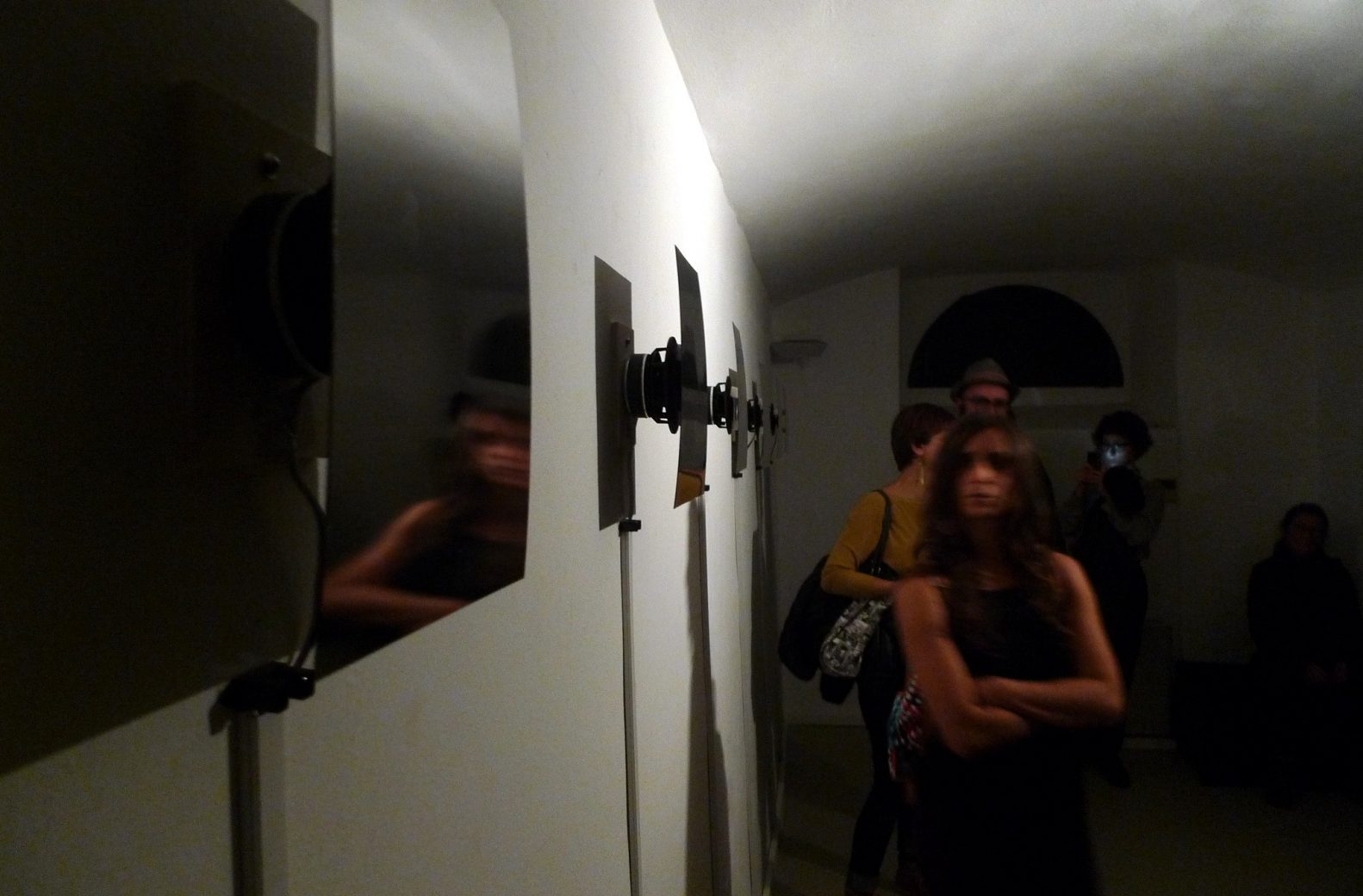Negar la voz dada / Deny the Given Voice
(english below)
Instalación sonora interactiva
Arturo Moya Villén, 2015
X Festival Signal, Cagliari 29 de octubre, 7 de noviembre. Il Lazaretto, Cagliari
Arturo Moya Villén at Signal Festival
Negar la voz dada es una instalación interactiva que reflexiona sobre la violencia del decir y del callar, en conexión con la función social del arte y la forma de apropiación del objeto artístico. La obra plantea la negación como el acto fundamental en el que se sustenta.
Una serie de espejos proyectan grabaciones de discursos públicos que comparten una doble condición: por un lado, estar ligados a un silencio posterior, sorpresivo o consciente, del que extraen parte de su sentido actual: palabras pronunciadas antes de la desaparición pública del personaje o de su muerte. Y, por otro, ser discursos que nuestra sociedad ha decidido conservar o repetir, lo que los pone en relación con la construcción de una posible identidad colectiva.
La propuesta exacerba la repetición íntima que les ha permitido superar el olvido de las cosas que se dicen y “desaparecen con el acto mismo que los ha pronunciado” (M. Foucault), proponiendo un muro sonoro en el que la única posibilidad de intelección es la negación, la única interacción posible es reducir la voz progresivamente al silencio, sea cual sea el contenido del discurso o el personaje que lo pronuncie.
Juntamente con la performance “Dar la voz negada” forman un díptico que reflexiona a la vez sobre la violencia implícita del decir y la explícita del callar.
Deny the Given Voice is an interactive sound installation that proposes a two-part reflection on the violence of saying and silencing, and on the mode of appropriation of the artistic object. The work poses negation as the trigger to unfolding its own meanings.
The piece consists of a display of devices, each made up of a mirror, a speaker attached to its back and a distance sensor. These devices project recordings of public speeches with two common characteristics: on the one hand, these are words spoken before the public disappearance of the individual or his death, and they inherit part of their current meaning from the ensuing silence, whether unexpected or intentional; on the other hand, these are speeches that our society has decided to preserve or repeat, thereby linking them to the construction of a social identity.
Speeches are played in their entirety, one at a time, but fragmented amongst the row of devices. At a distance, the jumble of speech fragments produces a single, unintelligible mass of sound; however, when the visitor approaches a device’s mirror, the distance sensor interrupts the speech, making it difficult or impossible to hear. The proximity to the device also activates a very low sine wave, which makes the mirror vibrate, distorting and blurring the visitor’s reflected image.
If the viewer remains close to the mirror only for a short time, the sound will resume once he/she moves away. When the visitor exceeds a certain threshold of time in front of the device, the sound of a bell signals the temporary extinction of the sound. This way all devices can be silenced. After a while, the devices resume playback, this time with a different speech.
Silence, therefore, is double. It is brought by the disappearance of the speeches’ authors, which confers the discourses with a different meaning. And it is also present in the functioning of the installation itself – despite the viewer’s intention to listen, the sound source is muted as he approaches it.
The piece builds a wall of sound that intensifies the same repetition that has allowed the speeches to survive the passing of time and resist the oblivion into which spoken word falls as immediately as it is being delivered. Intelligibility in such a sonically dense environment can only be achieved by interrupting the playback of the various devices, whatever the content of the speech or its agent might be.
Together with the performance «Give the voice denied”, they form a diptych, recursively reflecting on the implicit violence of saying and the explicit violence of silencing.
Negar la voz dada / Deny the Given Voice





